Research Article Open Access
Leptin Gene Mutations in Morbidly Obese and Severely Lean Individuals from Punjab, Pakistan
| Muhammad Wasim* and Nida Fakhar | |
| Institute of Biochemistry and Biotechnology, University of Veterinary and Animal Sciences, Lahore, Pakistan | |
| Corresponding Author : | Muhammad Wasim House No. 12, Street No. 9-B, Rachna Town Milad Chowk, Ferozwala, Dist. Sheikhupura Lahore 54000, Punjab, Pakistan Tel: 0322-4990977 E-mail: mm.waseemjee@gmail.com |
| Received August 16, 2014; Accepted October 20, 2014; Published October 25, 2014 | |
| Citation: Wasim M, Fakhar N (2014) Leptin Gene Mutations in Morbidly Obese and Severely Lean Individuals from Punjab, Pakistan. J Obes Weight Loss Ther 4:233. doi:10.4172/2165-7904.1000233 | |
| Copyright: © 2014 Wasim M, et al. This is an open-access article distributed under the terms of the Creative Commons Attribution License, which permits unrestricted use, distribution, and reproduction in any medium, provided the original author and source are credited. | |
Visit for more related articles at Journal of Obesity & Weight Loss Therapy
Abstract
Obesity has become an epidemic of modern world. Although 6 mutations in the leptin gene have been found to be associated with congenital leptin deficiency, leptin gene polymorphism has not been studied in adult morbidly obese and severely lean individuals. This study involves comparison of obese and lean individuals. In this research leptin gene mutations were studied in both morbidly obese and severely lean adults. Studied individuals belong to Punjab, region of Pakistan. Present study included 25 consenting morbidly obese (BMI>30 kg/m2) and 25 severely lean (BMI<18 kg/m2) individuals from Punjab, Pakistan. By using organic method DNA extracted and PCR was done to amplify leptin gene with the help of specific primers. The sequence of leptin gene was analyzed by using SSCP, heteroduplex analysis and automated Sanger sequencing. No genetic mutation was detected in leptin gene in studied morbidly obese and severely lean individuals. The result suggested that in Pakistani population leptin gene may not be a major cause for obesity and leanness. Other genetics as well as environmental factors may be involved.
Almost 40 chemicals are present for the behavior control in the brain. These chemicals are called neurotransmitters. 12 out of 40 have been found to control eating behavior. Leptin is one of these neurotransmitters. This neurotransmitter signals to the brain mainly in the hypothalamus, when a person stops to eat to maintain his BMI (www.loop.com/%7Ebkrentzman/obesity/genetics.html). Sequence of amino acids of the leptin protein is highly conserved among species so rare chance that mutation will be present in this gene. There is a 67% sequence homology among species [5]. Activity of this gene is started after binding with a receptor known as Leptin Receptor (LEPR). Due to alternative splicing of LEPR, six different isoforms formed. These isoforms are LEPRa, LEPRb, LEPRc, LEPRd, LEPRe and LEPRf. Only the LEPRb is the important and longest isoform that have the capacity of strong signaling so defect in signaling cause severe obesity [6].
Leptin use a pathway to perform functions is known as JAK/STAT pathway. Abbreviation of JAK/STAT is Janus Kinase (JAK) and Signal Transducer and Activator of Transcription (STAT) [7]. Leptin acts via two groups of arcuate neurons which are located in the hypothalamus region of the brain. First group of neurons expresses Agouti-Related Peptide and Neuropeptide Y (NPY) and the 2nd group expresses Pro-Opio-Melano-Cortin (POMC) and Cocaine and Amphetamine-Related Transcript (CART) [8]. Leptin is upregulated by insulin and cortisol and downregulated by catecholamines. In addition to these factors, Tumor Necrosis Factor-α (TNF-α) also serves as paracrine regulator, and increases secretion of leptin [9].
First two mutations have been reported these two mutations were D133G and R105W [10,11]. Rather than these mutations another mutation was also identified in the leptin gene in an Egyptian patient. This Egyptian patient had very high BMI which was 51. Sequencing showed a novel homozygous missense mutation N103K associated with obesity [12]. After that, fourth (L72S) in an Austrian 14 years old female child [13] finally, fifth and sixth mutations were (p.Leu161fsX170 and c.104_106delTCA) found in obese children of Pakistan belonging to Punjab [8]. So it is observed that in Punjab region of Pakistan chances of mutation is high in obese children. This research included 50 adult individuals belonging to Punjab region of Pakistan, 25 morbidly obese and 25 severely lean adult individuals to find out mutations in the leptin gene. Different techniques such as SSCP, heteroduplex analysis and sequencing were used to analyze the leptin gene.
Each 25 μl PCR reaction included 50 ng DNA, 1× Taq buffer [75 mM Tris-HCl (pH 8.8 at 25°C), 20 mM [(NH4)2SO4], 2 mM MgCl2, 200 μM of each dNTP, 10 pmoles of each primer and 5U of Taq DNA polymerase (Fermentas BioSciences, USA).
DNA was initially denatured at 95°C for 5 min and then the desired fragments were amplified using 35 cycles of denaturation at 94°C for 30 s, annealing at 60°C for 30 s, and extension at 72°C for 1 min followed by a 10 min final extension at 72°C in PCR machine (Bio-Rad Hercules, CA, USA). The process yielded a 224 bp product of exon 2 and a 417 bp product of exon 3. All the PCR products were detected by agarose and analyzed for mutation by SSCP, heteroduplex analysis and Sanger sequencing method.
In a study, mRNA of 68 obese and 38 lean subjects from the adipose tissue was examined to find out mutations in the Ob gene. Mutations were not found in human Ob gene in 105 subjects. But only in one individual G to A base change was identified. Due to this mutation amino acid changes from valine to methionine at the position 94 of coding region. Result suggested that mutations in the leptin gene were not the primary cause of human obesity [15]. In this study, all the samples were screened by using SSCP, heteroduplex and sequencing; after analysis no mutation in all the samples of both second and third exon of leptin gene was found. Third exon of the leptin gene is considered as hotspot for point mutations which cause obesity. In this exon, 6 G stretch region is present as already mentioned it is much conserved region of leptin gene (Figures 8 and 9). Mutation in the 6 G stretch has been observed in Pakistani obese children [8]. Until now only 6 pathogenic leptin mutations have been reported. All the 6 mutations are given in Table 2. Leptin sequence comparison of different species showed that gene is conserved so there is rare chance to find a mutation in the leptin gene (Figure 10).
Conclusively, mutation is not present in the leptin gene of studied Pakistani population. Obesity and leanness may mainly be caused by the other genetics and environmental factors. Leptin gene is much conserved so mutation rate is very low as compared to other genes.
References
- Madej T, Boguski MS, Bryant SH (1995) Threading analysis suggests that the obese gene product may be a helical cytokine. FEBS Lett 373: 13-18.
- Brennan AM, Mantzoros CS (2006) Drug Insight: the role of leptin in human physiology and pathophysiology--emerging clinical applications. Nat Clin Pract Endocrinol Metab 2: 318-327.
- Green ED, Maffei M, Braden VV, Proenca R, DeSilva U, et al. (1995) The human obese (OB) gene: RNA expression pattern and mapping on the physical, cytogenetic, and genetic maps of chromosome 7. Genome Res 5: 5-12.
- Sinha MK, Opentanova I, Ohannesian JP, Kolaczynski JW, Heiman ML, et al. (1996) Evidence of free and bound leptin in human circulation. Studies in lean and obese subjects and during short-term fasting. Journal Clinical Invest 98: 1277–1282.
- Zhang F, Basinski MB, Beals JM, Briggs SL, Churgay LM, et al. (1997) Crystal structure of the obese protein leptin-E100. Nature 387: 206-209.
- Nanjappa V, Raju R, Muthusamy B, Sharma J, Thomas JK, et al. (2011) A comprehensive curated reaction map of leptin signaling pathway. JPB 4: 184-189.
- Frühbeck G (2006) Intracellular signalling pathways activated by leptin. Biochem J 393: 7-20.
- Fatima W, Shahid A, Imran M, Manzoor J, Hasnain S, et al. (2011) Leptin deficiency and leptin gene mutations in obese children from Pakistan. Int J Pediatr Obes 6: 419-427.
- Fried SK, Ricci MR, Russell CD, Laferrère B (2000) Regulation of leptin production in humans. J Nutr 130: 3127S-3131S.
- Montague CT, Farooqi IS, Whitehead JP, Soos MA, Rau H, et al. (1997) Congenital leptin deficiency is associated with severe early-onset obesity in humans. Nature 387: 903-908.
- Strobel A, Issad T, Camoin L, Ozata M, Strosberg AD (1998) A leptin missense mutation associated with hypogonadism and morbid obesity. Nat Genet 18: 213-215.
- Mazen I, El-Gammal M, Abdel-Hamid M, Amr K (2009) A novel homozygous missense mutation of the leptin gene (N103K) in an obese Egyptian patient. Mol Genet Metab 97: 305-308.
- Fischer-Posovszky P, von Schnurbein J, Moepps B, Lahr G, Strauss G, et al. (2010) A new missense mutation in the leptin gene causes mild obesity and hypogonadism without affecting T cell responsiveness. J Clin Endocrinol Metab 95: 2836-2840.
- Orita M, Iwahana H, Kanazawa H, Hayashi K, Sekiya T (1989) Detection of polymorphisms of human DNA by gel electrophoresis as single-strand conformation polymorphisms. Proc Natl Acad Sci U S A 86: 2766-2770.
- Considine RV, Considine EL, Williams CJ, Nyce MR, Zhang P, et al. (1996) Mutation screening and identification of a sequence variation in the human ob gene coding region. Biochem Biophys Res Commun 220: 735-739.
Tables and Figures at a glance
| Table 1 | Table 2 |
Figures at a glance
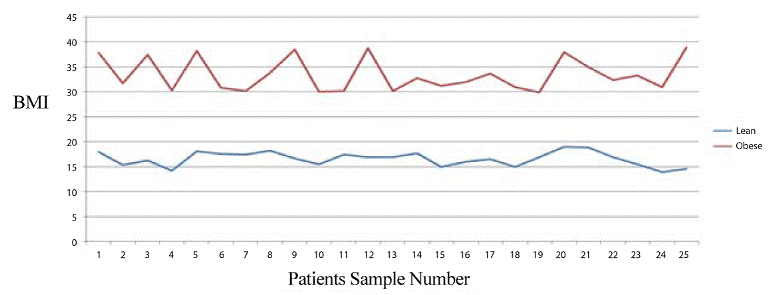 |
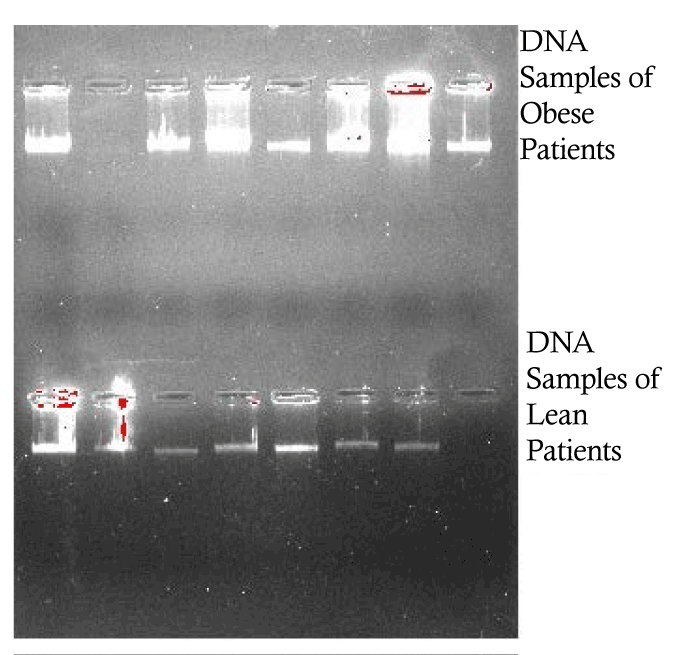 |
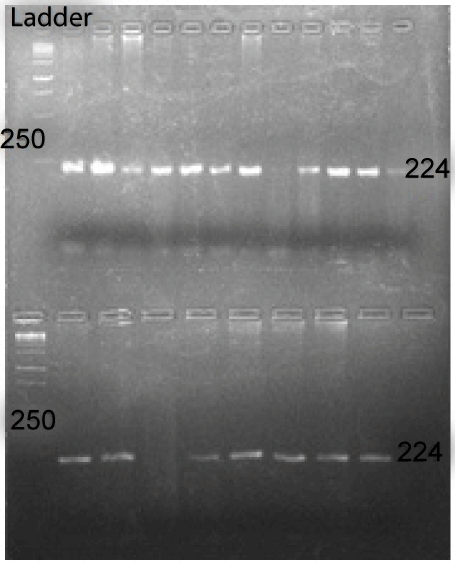 |
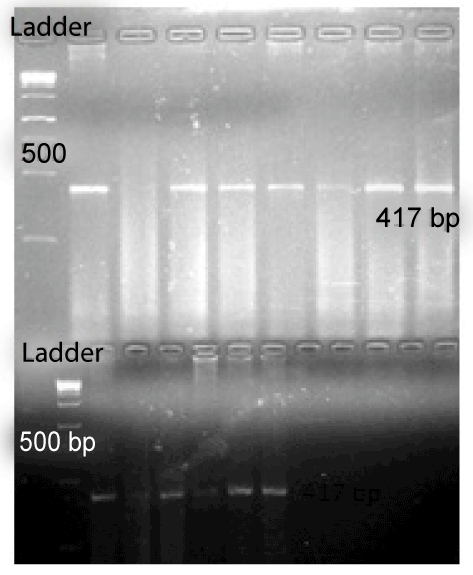 |
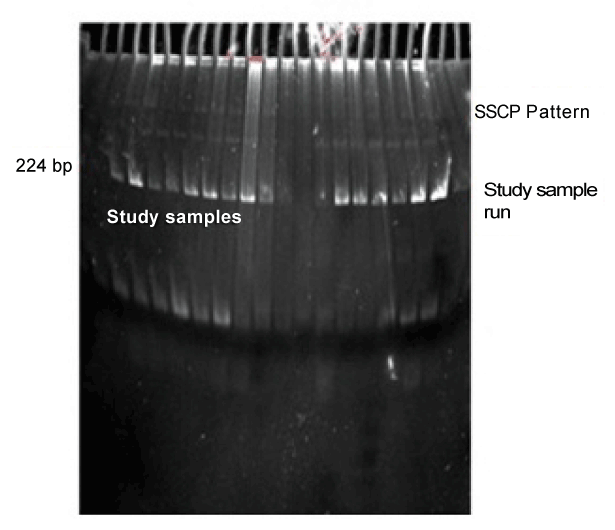 |
| Figure 1 | Figure 2 | Figure 3 | Figure 4 | Figure 5 |
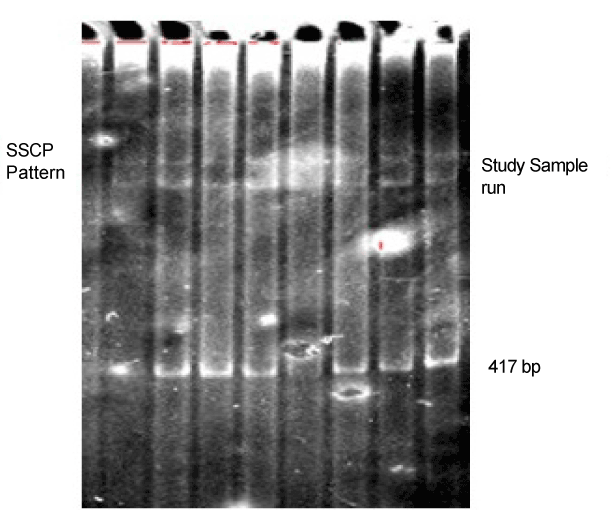 |
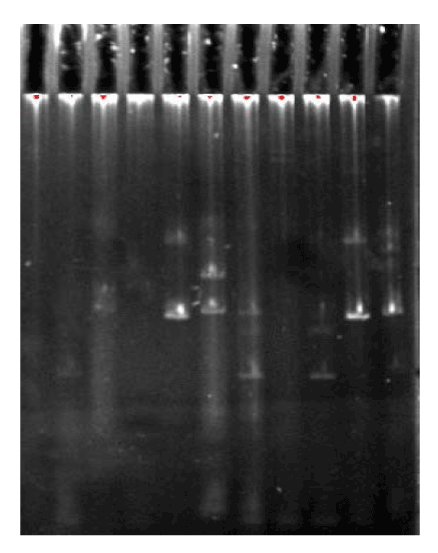 |
 |
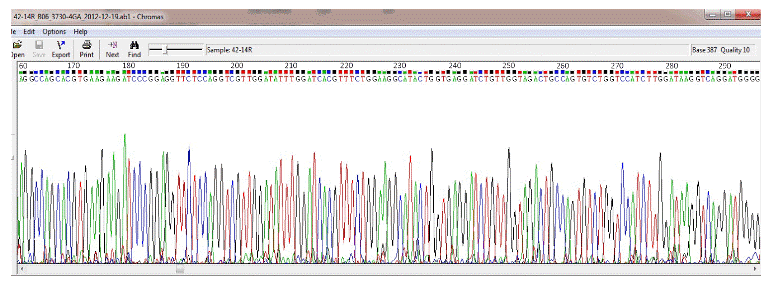 |
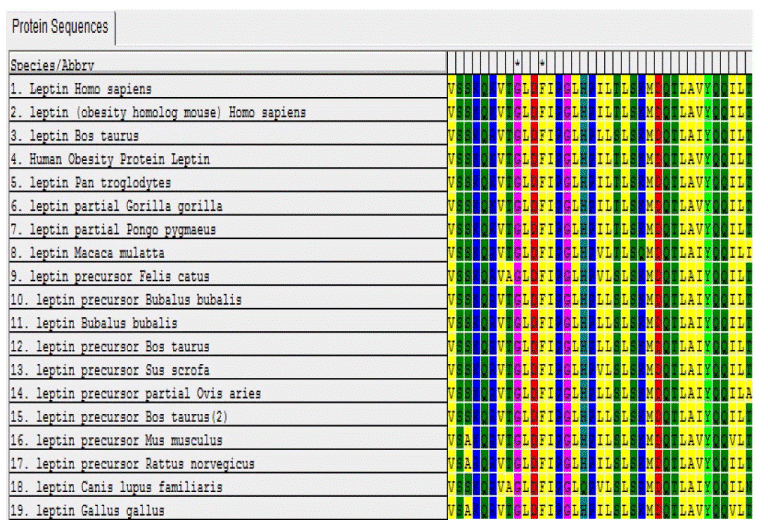 |
| Figure 6 | Figure 7 | Figure 8 | Figure 9 | Figure 10 |
Relevant Topics
- Android Obesity
- Anti Obesity Medication
- Bariatric Surgery
- Best Ways to Lose Weight
- Body Mass Index (BMI)
- Child Obesity Statistics
- Comorbidities of Obesity
- Diabetes and Obesity
- Diabetic Diet
- Diet
- Etiology of Obesity
- Exogenous Obesity
- Fat Burning Foods
- Gastric By-pass Surgery
- Genetics of Obesity
- Global Obesity Statistics
- Gynoid Obesity
- Junk Food and Childhood Obesity
- Obesity
- Obesity and Cancer
- Obesity and Nutrition
- Obesity and Sleep Apnea
- Obesity Complications
- Obesity in Pregnancy
- Obesity in United States
- Visceral Obesity
- Weight Loss
- Weight Loss Clinics
- Weight Loss Supplements
- Weight Management Programs
Recommended Journals
Article Tools
Article Usage
- Total views: 13900
- [From(publication date):
December-2014 - Aug 29, 2025] - Breakdown by view type
- HTML page views : 9346
- PDF downloads : 4554
